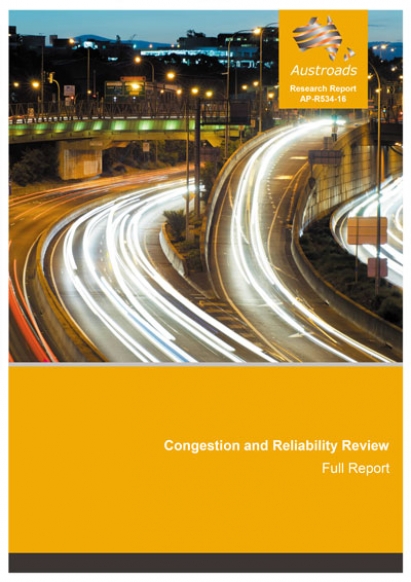Wednesday, 14 December 2016
Austroads has published the Congestion and Reliability Review which measures levels and identifies key causes of congestion across major cities in Australia and New Zealand (ANZ).

The study found that ANZ cities perform in line with international comparators on the three key measures of average speed, travel time delay and reliability.
The findings are based on an analysis of Google Maps data for 600km of roads for each major Australian city, enabling analysis of travel time along different road segments. The analysis was based on two months of data, comprising of 1km long road segments, with data points taken every 15 minutes, to calculate the six key congestion measures outlined in the report. An econometric analysis was then undertaken to provide insight into the drivers of network performance.
This new approach has provided some ground-breaking insights into congestion performance and causes for Australian and New Zealand cities.
Congestion performance is correlated with population, so the biggest cities, Sydney and Melbourne, perform worst overall. In these cities, road users need to allow an average 50% more time than free flow to complete their journeys during peak hours, when average speeds are as low as 29 km/hr and 34 km/hr respectively.
Brisbane (52 km/hr) and Perth (58km/hr) have better performance, while Auckland congestion performance is similar to Melbourne, despite having a lower population.
Adelaide has the slowest average travel speed, but higher reliability, reflecting a road network with fewer motorways. Darwin, Hobart and Wellington have low levels of congestion, with Canberra the best performing city overall, achieving average speeds over 60 km/hr.
While weekday morning and afternoon peaks exhibit time delays up to 40%, weekend travel also faces congestion with delays up to 30% at the mid-day peak in Sydney.
The causes of congestion are different in each city; most urban congestion (88-98%) is a consequence of recurrent causes (a routine imbalance of the number of road users and road capacity), while the remaining 2-12% is due to non-recurrent causes which include incidents, planned events and weather.
Effective action on road congestion is needed to avoid it becoming a drag on the economy, living standards and quality of life.
The study recommends that road and transport agencies invest in a portfolio of interventions including integrated land and transport planning, as well as relatively low cost, high benefit cost ratio interventions such as smart ramp metering and optimising traffic signals.
For each road corridor, both demand and supply interventions are important, and a program of multiple intervention projects tailored to the specific congestion problem is most likely to optimise the investment in new road capacity. In particular, detailed pre-investment metrics and post-implementation analytics are required to ensure that the multi-billion dollar investments are made wisely.
Congestion mitigation strategies are on the cusp of major change over the next 10 years, due to increasingly intelligent technology embedded in vehicles and road infrastructure. The report recommends that ANZ road agencies provide a platform of regulation and technology that can support adoption of this innovation from the private sector.
Report Links:
